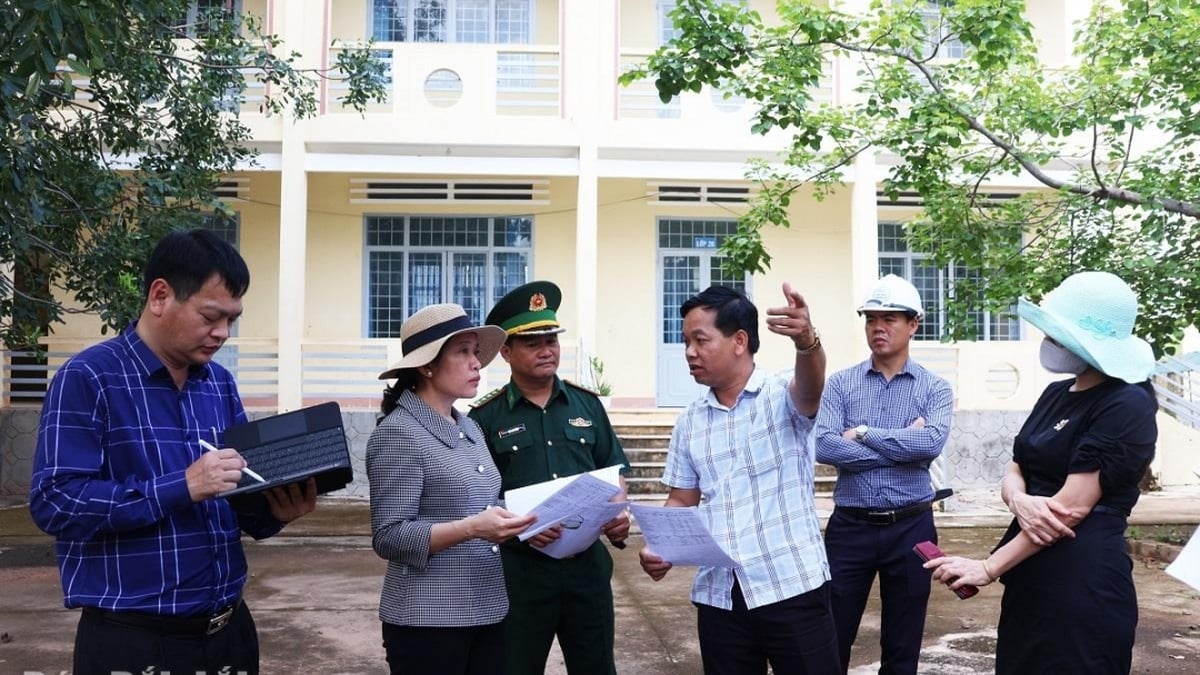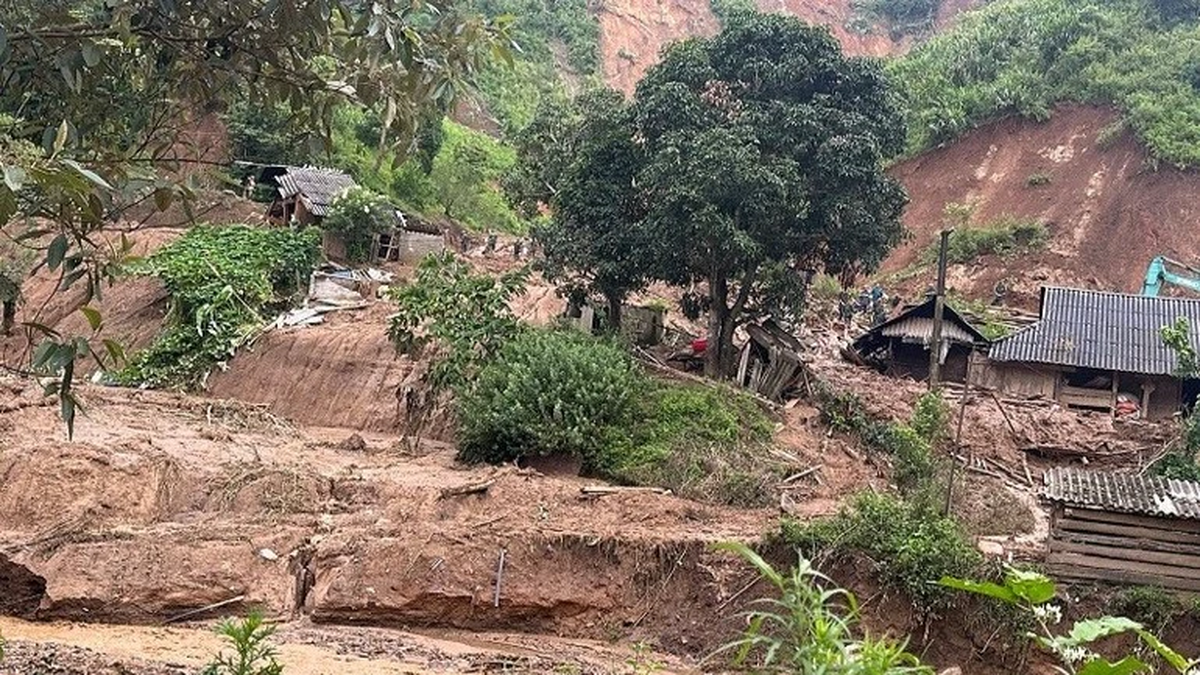Khanh Hoa is a land with a rich history and culture. There used to be a Xom Con culture here, dating back long before the Sa Huynh civilization. Cultural and historical relics, famous landscapes… contribute to painting a magnificent picture of tangible culture in this beautiful, majestic, poetic and potential land of Khanh Hoa .
1. Prehistory and the Kingdom of Champa
Archaeological documents confirm that since prehistoric times, people have lived in Khanh Hoa. In Hon Tre in Nha Trang Bay, archaeologists have discovered many stone tools of an agricultural system using hoes. With the discovery of the Khanh Son lithophone in February 1979 in Khanh Son district, it shows that the owner of this lithophone lived here around the middle of the 1st millennium BC.
The discovered sites of the Xom Con culture (Ba Ngoi, Cam Ranh) allow us to confirm that the Iron Age culture in Khanh Hoa dates back nearly 4000 years and developed earlier than the Sa Huynh culture. Located in the distribution area of the Sa Huynh culture, Khanh Hoa has many archaeological sites of this culture such as: Dien Son, Binh Tan, Hon Tre, Ninh Than.
At the beginning of the Common Era, a part of the Cau tribe (Kranukavamsa) - one of the two major tribes of the Champa people at that time - established a small country and named it the Southern Cham Small Country (the inscription says Panrăn or Panduranga). This small country consisted of two regions: Panrăn (the area of present-day Phan Rang, Phan Thiet) and Kauthara (the area of present-day Khanh Hoa). Opposing the Southern Cham Small Country was the Northern Cham Small Country in the area of present-day Quang Nam, Quang Ngai, and Binh Dinh.
After that, after many centuries of continuous civil war, the Champa kingdom was established on the basis of the unification of the two regions of Southern Cham and Northern Cham. By the 8th century, Southern Cham dominated, leading to the birth of the Panduranga dynasty (Complete Kingdom). From then on, the Kauthara region developed to its peak with large and sacred temple complexes, typically the Po Nagar temple worshiping the mother goddess of the land Yang Po Y Na Gar. To this day, there still exist many steles written in Sanskrit and ancient Cham scattered throughout Khanh Hoa.
2. The formation of Khanh Hoa land from 1653 to August 1945
According to historical sources in our country, in the spring of Quy Ty year 1653, in the process of expanding the border of Dai Viet (now Vietnam), under the order of Lord Nguyen Phuc Tan, the governor Hung Loc took the land from the north bank of Phan Rang river (now Ninh Thuan province) to Da Bia mountain - Deo Ca (the border between the two provinces of Phu Yen and Khanh Hoa today).
Lord Nguyen Phuc Tan established Thai Khang Palace, consisting of two prefectures: Thai Khang prefecture, including Tan Dinh and Quang Phuoc districts in the North (present-day Ninh Hoa and Van Ninh towns) and Dien Ninh prefecture, including Phuoc Dien, Hoa Chau, and Vinh Xuong districts in the South (present-day Dien Khanh, Cam Lam, Khanh Son districts, Cam Ranh city, Nha Trang city, and a part of the North of Ninh Thuan province), and assigned Hung Loc as governor.
Thus, by establishing Thai Khang Palace and dividing administrative units, Lord Nguyen integrated the land of Khanh Hoa today into Dai Viet territory. This historical event is considered the starting point for the formation of the administrative territory of Khanh Hoa province today.
Since then, the Vietnamese people's work of reclaiming and establishing villages has been increasingly promoted. The population is concentrated in the lower reaches of the Dinh and Cai rivers.
In the year Canh Ngo 1690, under the reign of Lord Nguyen Phuc Tran, Thai Khang prefecture was renamed Binh Khang prefecture and took the name Binh Khang palace.
In the year of Nham Tuat 1742, under the reign of Lord Nguyen Phuc Khoat, Dien Ninh prefecture was changed to Dien Khanh prefecture.
In the year of Giap Ty 1744, the administrative organization of the Nguyen Dynasty in Dang Trong was rearranged, the king's seal was cast, the lord's palace was called Dien, the lords' royal titles were posthumously honored, the agencies under the lord's palace were changed to Luc Bo, the territory of Dang Trong (from Gianh River in Quang Binh to Ca Mau) was divided into 12 dinh, including Binh Khang dinh including two phu Binh Khang and Dien Khanh, overseeing 5 districts Quang Phuoc, Tan Dinh, Phuoc Dien, Vinh Xuong, Hoa Chau.
In 1771, the three Tay Son brothers raised an army to fight against the Nguyen Lord. Only three years later, the Tay Son army controlled the land stretching from Quy Nhon to Binh Thuan. After that, the Nguyen general Tong Phuc Hap led his army to attack and recaptured Binh Thuan Palace and Dien Khanh Palace, but then Nguyen Hue led his army to attack and recapture the two areas.
In July 1793, Dinh Vuong Nguyen Phuc Anh personally led a large army of land and water from Gia Dinh to Nha Trang. From Nha Trang, he attacked Dien Khanh. The Tay Son army could not hold out and had to abandon Dien Khanh and Binh Khang. Nguyen Anh ordered people to build Dien Khanh citadel and set up a shipyard. After that, Tay Son general Tran Quang Dieu led troops to attack twice more in 1794 and 1795, but both failed.
In 1802, after defeating the Tay Son dynasty, Nguyen Phuc Anh ascended the throne and took the title Gia Long. In 1803, Dinh Binh Khang was renamed Dinh Binh Hoa, Binh Khang prefecture was also renamed Binh Hoa prefecture, but the headquarters was moved from here to Dien Khanh prefecture (present-day Dien Khanh Citadel).
In the 7th year of Gia Long (1808), the Nguyen Dynasty carried out the first administrative reform on a national scale. The dinh were changed to towns. In 1831 (the 12th year of Minh Mang), Binh Hoa town was renamed Khanh Hoa province, and Binh Hoa prefecture became Ninh Hoa prefecture. At that time, Khanh Hoa province consisted of 2 prefectures and 4 districts: Dien Khanh prefecture consisted of 2 districts: Phuoc Dien, Vinh Xuong; Ninh Hoa prefecture consisted of 2 districts: Quang Phuoc and Tan Dinh, the provincial capital was Dien Khanh prefecture.
During the reigns of King Thieu Tri (1841-1847) and King Tu Duc (1848-1883), Khanh Hoa's administrative organization did not have any major changes.
3. Khanh Hoa from 1885 to August 1945
In the autumn of At Dau 1885, French colonialists occupied Khanh Hoa. From then until the August Revolution in 1945, under the colonial and feudal governments, the boundaries and administrative organization changed.
In the year of Mau Ty 1888, King Dong Khanh merged the land of An Phuoc district, Ninh Thuan prefecture of Binh Thuan province and 7 communes of Tuy Phong district, 2 cantons of Hoa Da district into Vinh Xuong district. The boundary of Khanh Hoa province was expanded.
In 1901, when Ninh Thuan prefecture was established as Ninh Thuan province, the above-mentioned land was returned to Ninh Thuan. From here, Khanh Hoa province had 2 prefectures and 4 districts. Dien Khanh prefecture included 2 districts: Phuoc Dien managed 5 cantons with 38 communes and villages; Vinh Xuong district managed 4 cantons with 45 communes and villages. Ninh Hoa prefecture included 2 districts: Quang Phuoc managed 6 cantons with 83 communes and villages and Tan Dinh district managed 3 cantons with 73 communes and villages.
Under the reign of King Duy Tan (1907 - 1916), a part of Vinh Xuong district was cut to establish Cam Lam district and Phuoc Dien district was abolished and handed over to Dien Khanh prefecture for management, and Quang Phuoc district was abolished and handed over to Ninh Hoa prefecture for management. Thus, Khanh Hoa province still had 2 prefectures and 3 districts: Cam Lam, Vinh Xuong and Tan Dinh.
On January 19, 1904, the Governor-General of Indochina issued a decree to dissolve the Cung Son Administrative Center of Phu Yen Province, which was established by the decree of February 15, 1900. This ethnic minority area, together with the M'Deak area (Dak Lak province), was merged into Khanh Hoa province. In 1923, Dak Lak province was established, and the aforementioned land was separated from Khanh Hoa province and assigned to Dak Lak province for management.
In 1924, realizing that Nha Trang's location was becoming increasingly important, many residents gathered to trade. In the future, it could develop into a political, economic, and cultural center. King Khai Dinh issued an edict on June 11, 1924, approved by the Governor-General of Indochina by a Decree on June 30, 1924, establishing Nha Trang town. When the town was first established, Nha Trang had 4 villages: Xuong Huan, Phuong Cau, Van Thanh, and Phuong Sai. Here, there were French colonial governing agencies such as the consulate, the military supervisory office, and several other agencies. Only the Southern Dynasty governing agencies such as the patrol, the judge, and the military commander were still located at Dien Khanh Citadel.
In October 1931, after National Highway 21 (now National Highway 26) was completed connecting Tan Dinh district with Buon Ma Thuot (Dak Lak), Tan Dinh district became prosperous and had an important position. The French colonial government decided to change the name of Tan Dinh district to Ninh Hoa prefecture (now Ninh Hoa town), the remaining land was changed to Van Ninh district. The place name Van Ninh came from here.
On June 8, 1939, the Governor-General of Indochina issued a decree establishing the Ba Ngoi Administrative Geography.
On March 15, 1944, King Bao Dai issued Decree No. 9, approved by the Governor-General of Indochina by Decree dated June 22, 1944, converting Nha Trang town into a town. Nha Trang town has 5 wards: Xuong Huan (first ward), Phuong Cau (second ward), Van Thanh (third ward), Phuong Sai (fourth ward), Phuoc Hai (fifth ward).
4. Khanh Hoa from 1945 to present
On March 9, 1945, Japan staged a coup against France, handing over Khanh Hoa province to the Southern Dynasty's officials for management, and the province's administrative agency moved to Nha Trang. From then on, Nha Trang officially became the provincial capital of Khanh Hoa province.
In the fall of 1945, the August Revolution succeeded, Khanh Hoa belonged to the revolutionary government of the Democratic Republic of Vietnam. But just over 2 months later, the French colonialists and then the American imperialists returned to invade Khanh Hoa. The people of Khanh Hoa rose up to fight against the French and the Americans for more than 30 years. During that time, the administrative geography of Khanh Hoa province changed to suit the situation...
In 1955, under the Republic of Vietnam, Khanh Hoa province was also reorganized in all aspects. The prefectures and districts were changed to districts. The villages were changed to communes. In May 1959, the two communes of Krang Ying and Krang Hinh of Dak Lak province were merged into Khanh Hoa province and established Khanh Duong district. In April 1960, 12 Thuong villages of Cam Lam district were extracted from Khanh Hoa to be merged into Du Long district, Ninh Thuan province. In October 1965, a part of Cam Lam district in the South was cut to establish Cam Ranh town under the Central Government (Cam Ranh special zone).
On April 1, 2, and 3, 1975, the Liberation Army of South Vietnam took over Ninh Hoa, Nha Trang, and Cam Ranh. The transfer of power took place peacefully because most of the Army of the Republic of Vietnam had withdrawn to the Phan Rang defense line.
After the great victory in the spring of 1975, in November 1975, the two provinces of Phu Yen and Khanh Hoa merged into Phu Khanh province. In 1977, Nha Trang town was upgraded to Nha Trang city, Cam Ranh town merged into Cam Lam district to become Cam Ranh district.
On December 28, 1982, the 7th National Assembly, 4th session decided to merge Truong Sa island district into Phu Khanh province. On June 30, 1989, the 8th National Assembly of the Socialist Republic of Vietnam (5th session) divided Phu Khanh province into two provinces, Phu Yen and Khanh Hoa.
On April 22, 1999, Nha Trang city was recognized as a type II urban area of Khanh Hoa province.
On July 7, 2000, Cam Ranh district was upgraded to Cam Ranh town.
On April 11, 2007, the Government issued Decree No. 65/2007/ND-CP on adjusting the administrative boundaries of a number of districts, towns, communes and wards in Khanh Hoa province to establish the new district of Cam Lam and a number of new communes and towns. In Truong Sa district, Truong Sa town was established on the basis of Truong Sa Lon island and its surrounding islands, rocks and shoals; Song Tu Tay commune was established on the basis of Song Tu Tay island and its surrounding islands, rocks and shoals; Sinh Ton commune was established on the basis of Sinh Ton island and its surrounding islands, rocks and shoals.
On April 22, 2009, Nha Trang city was recognized as a class I urban area under Khanh Hoa province.
On October 26, 2010, the Government issued a decision to establish Ninh Hoa town in Khanh Hoa province on the basis of the entire 119,777 hectares of natural area and 233,558 people of the old Ninh Hoa district.
On December 23, 2010, Cam Ranh town was officially recognized as a city under Khanh Hoa province.
Regarding the current administrative organization, Khanh Hoa province has 2 cities: Nha Trang, Cam Ranh, 1 town of Ninh Hoa and 6 districts: Dien Khanh, Khanh Vinh, Khanh Son, Cam Lam, Van Ninh and Truong Sa island district.
Provincial Information Portal


































































































Comment (0)